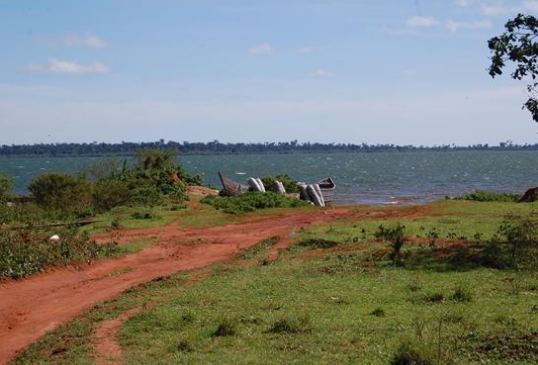 | ||
Shepherd s heart international ministry lingira buvuma islands uganda
Buvuma Island (sometimes 'Uvuma', locally ) is the largest island in the Buvuma Islands chain, in Lake Victoria in Africa.
Contents
- Shepherd s heart international ministry lingira buvuma islands uganda
- Map of Buvuma Island Uganda
- Location
- Description
- Transportation and health
- Economy
- Education and religion
- Parliamentary representative
- Geology and deforestation
- Tourism
- Archaeological research
- References
Map of Buvuma Island, Uganda
Location
The chain of islands known as Buvuma Islands consists of more than fifty islands and is located a few kilometres off the northern shores of Lake Victoria, Uganda in the Napoleon Gulf. Buvuma is approximately 25 kilometres (16 mi), by water, south of the major city of Jinja, and around 90 kilometres (56 mi), south-east of the national capital, Kampala. It is part of the wider Buganda region, and was administered as part of Mukono but was recently made into a district of its own by the government of Uganda.
Description
The main island is Buvuma, with a land area of around 200 square-miles (517 km²), and a population of around 20,000. It is forested, and is a destination for intrepid bird-watching tourists. The forest is being cut and burned to provide three boats a day full of charcoal for the nearby city of Jinja. There are twenty-six gazetted Forest Reserves in Buvuma.
Transportation and health
There is a somewhat unreliable ferry to the mainland. There are also unofficial small boat services from Kiyindi, a major fishing village on the shores of Lake Victoria. Boat taxis provide transportation daily from the islands to Masese, a landing site near Jinja. There are two health centres, but no electricity on the island. Sleeping sickness and tsetse flies are major concerns. Because of the communities' heavy reliance on the lake water, which is infested with parasites, inhabitants are susceptible to Bilharzia.
Economy
The area is very poor compared to other parts of Uganda because funds allocated to it are often diverted before they reach the island.
The waters around the islands are rich in fish, and the local Bavuma and Basoga are fishermen.
In 2012, Bidco Palm Oil Limited, a regional edible oil manufacturer, unveiled plans to establish a 6,500 hectares (16,000 acres) palm oil plantation and processing factory, beginning in 2013. With another 3,500 hectares (8,600 acres), in a planned outgrowers' scheme, the entire Bidco Palm Oil Project on Buvuma Island is expected to grow to 10,000 hectares (25,000 acres), when completed.
Education and religion
Most adults are illiterate and speak no English (one of the official languages of Uganda).
One third of the population is Muslim, one third is animist, and the other one third is Christian. The longest running missionary project is Youth With A Mission (YWAM) on Lingira Island. They have a primary health care and community development project that has been running since 1991. On the main island of Buvuma, the World Gospel Mission does some limited child immunization, clean water projects, trains traditional birth attendants, and sponsors a primary school.
Parliamentary representative
The Buvuma elected Parliamentary representative (2005) was William Nsubuga.
Geology and deforestation
The islands are of ironstone formation overlying quartzite and crystalline schists. Other islands are Bugaia, Lingira (pop. 1000), and Namiti. Rusinga and Mfangano are within Kenyan borders. The 1911 Britannica said: "Most of these islands are densely forested, and some of them attain considerable elevation. Their scenery is of striking beauty." Except at the highest elevations, Rusinga and Mfangano are today largely deforested.
Tourism
Rusinga island is connected by a causeway to the mainland. There are a few tourist lodges, and the island is accessible via several roads leading from Kisumu and Homa Bay as well through the nearby Ruma National Park. It can be reached from the north by a dirt road from the Kakamega Forest or by air from the Maasai Mara.
Archaeological research
Rusinga is rich in fossils, and Mary Leakey found the skull of Proconsul africanus on the island. The Miocene floras of Rusinga and Mfwanganu islands are subject to a long-term study by paleobotanists. There was an archaeological prospection carried out by the Tervuren Museum, Belgium, in 1968 (published 1971), on Buvuma and Bugaia islands at Munyama Cave, Tonge Cave, and Nakisito, plus another 47 sites. Pottery materials from 13,000 B.C. to 8,000 B.C. were found.
